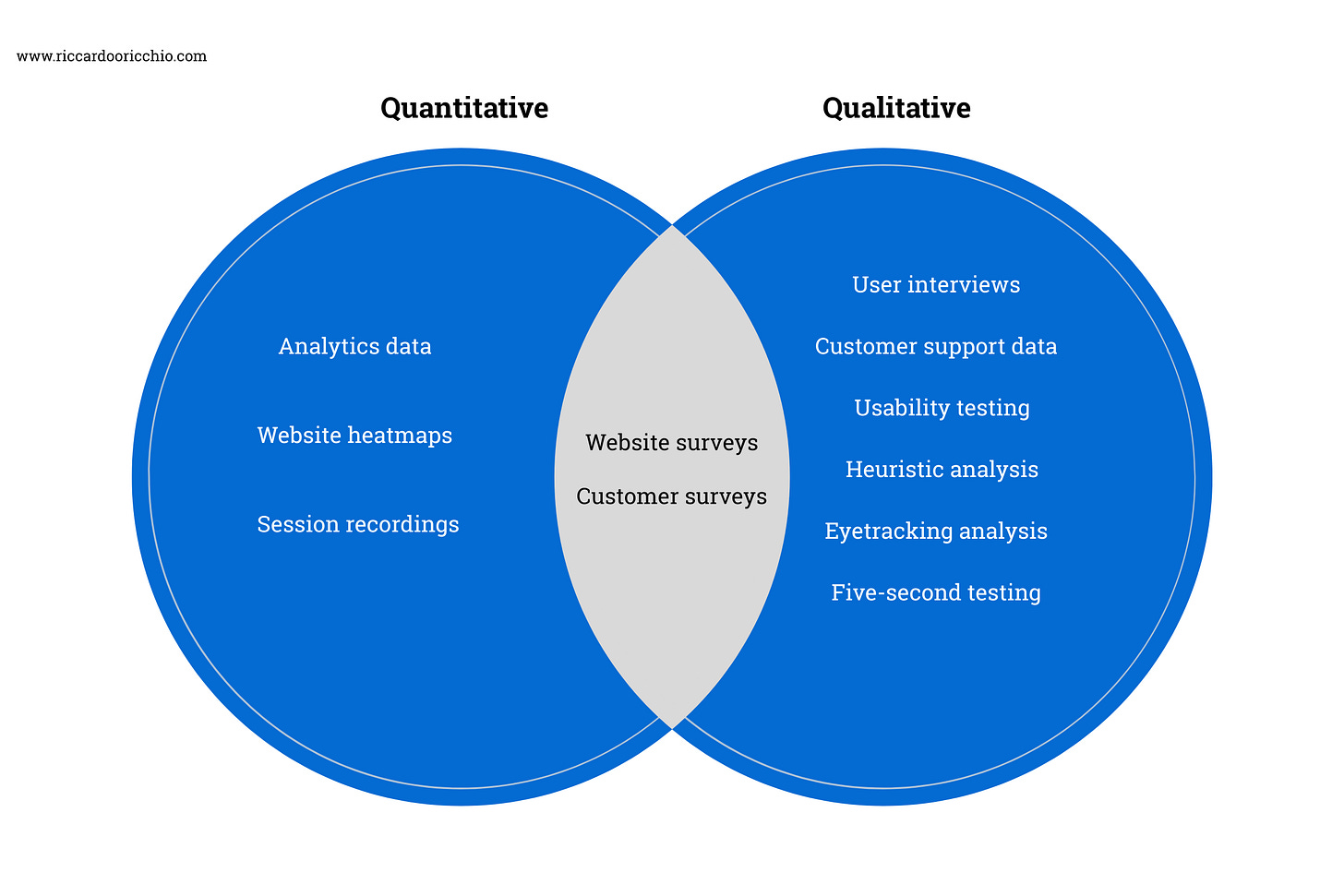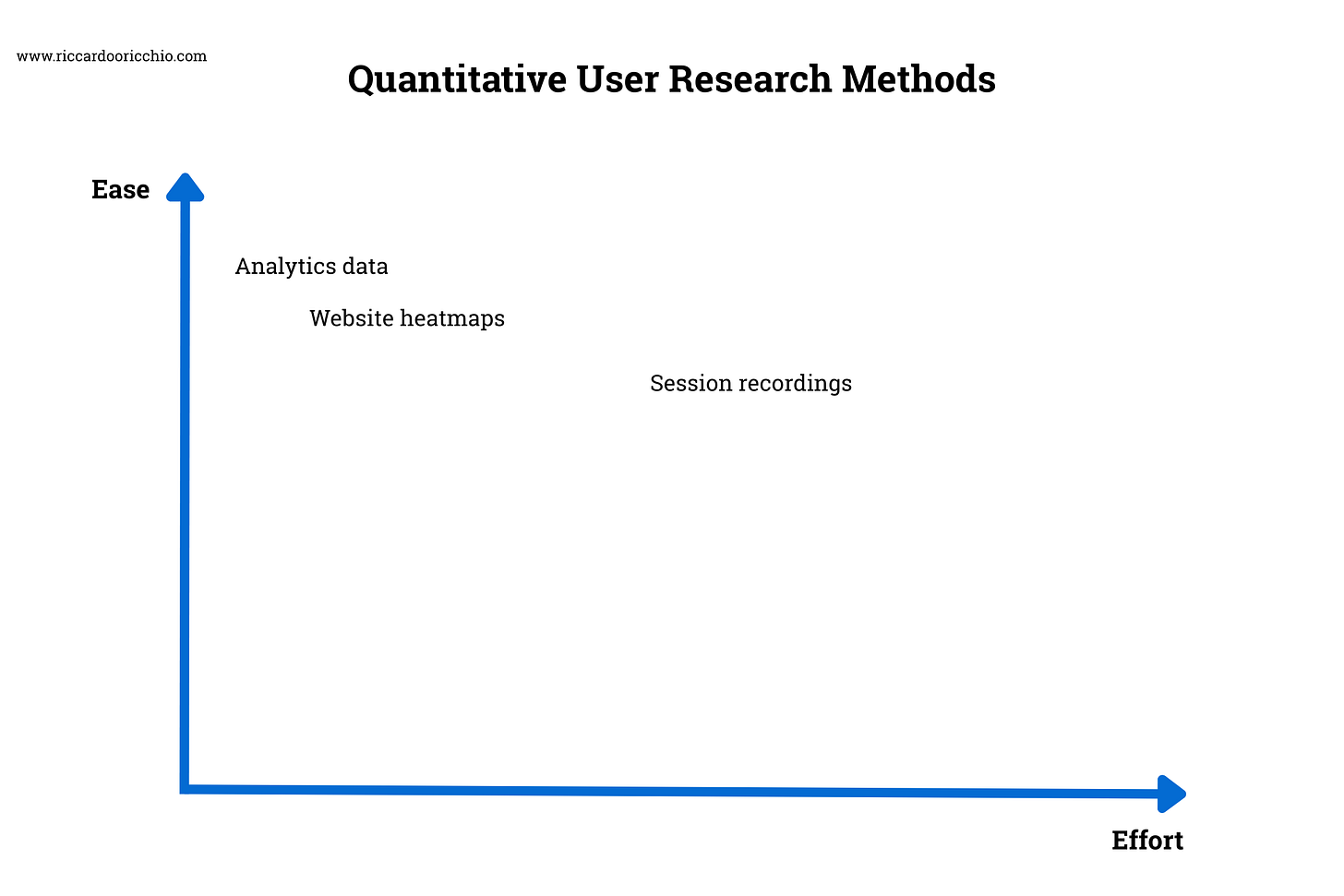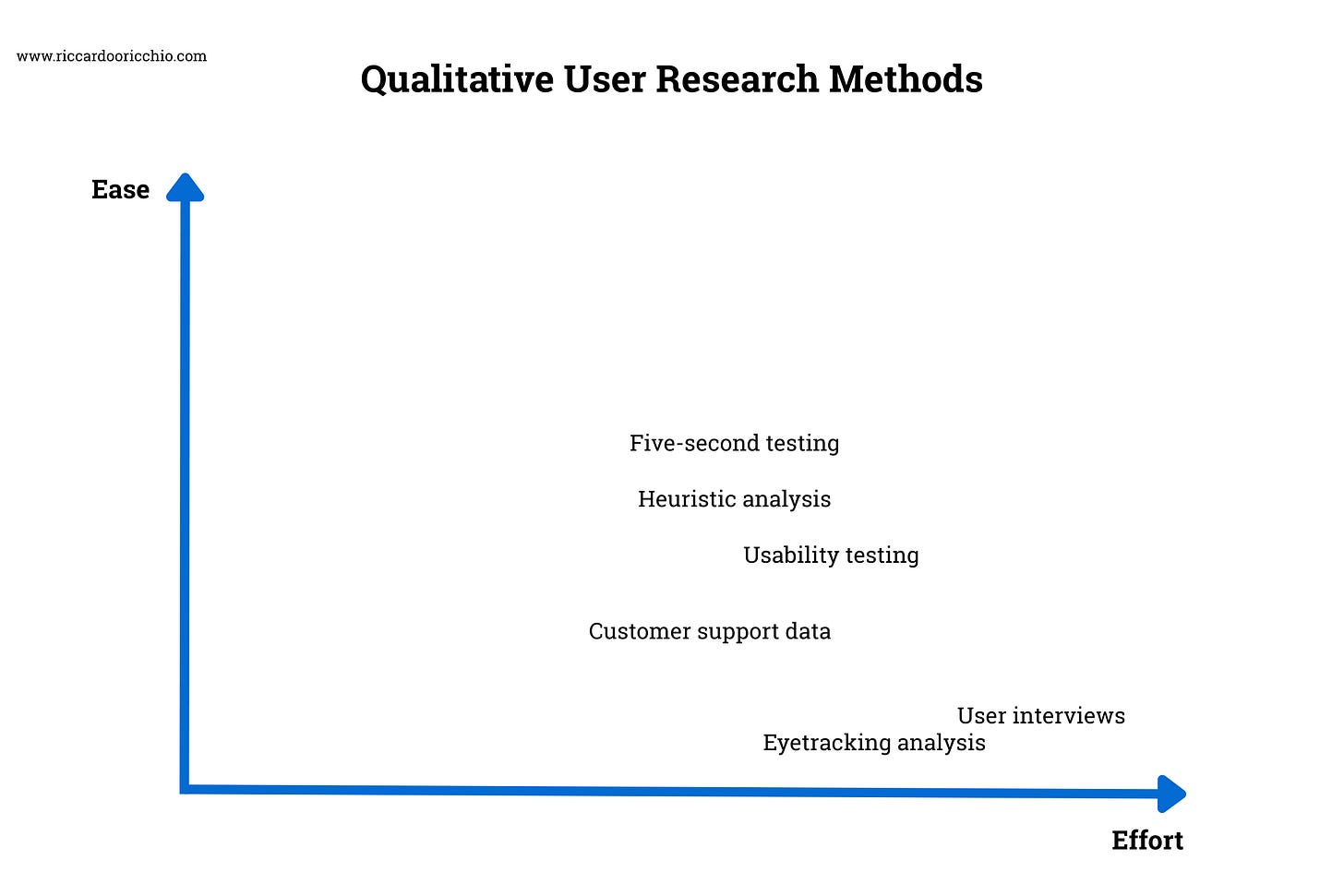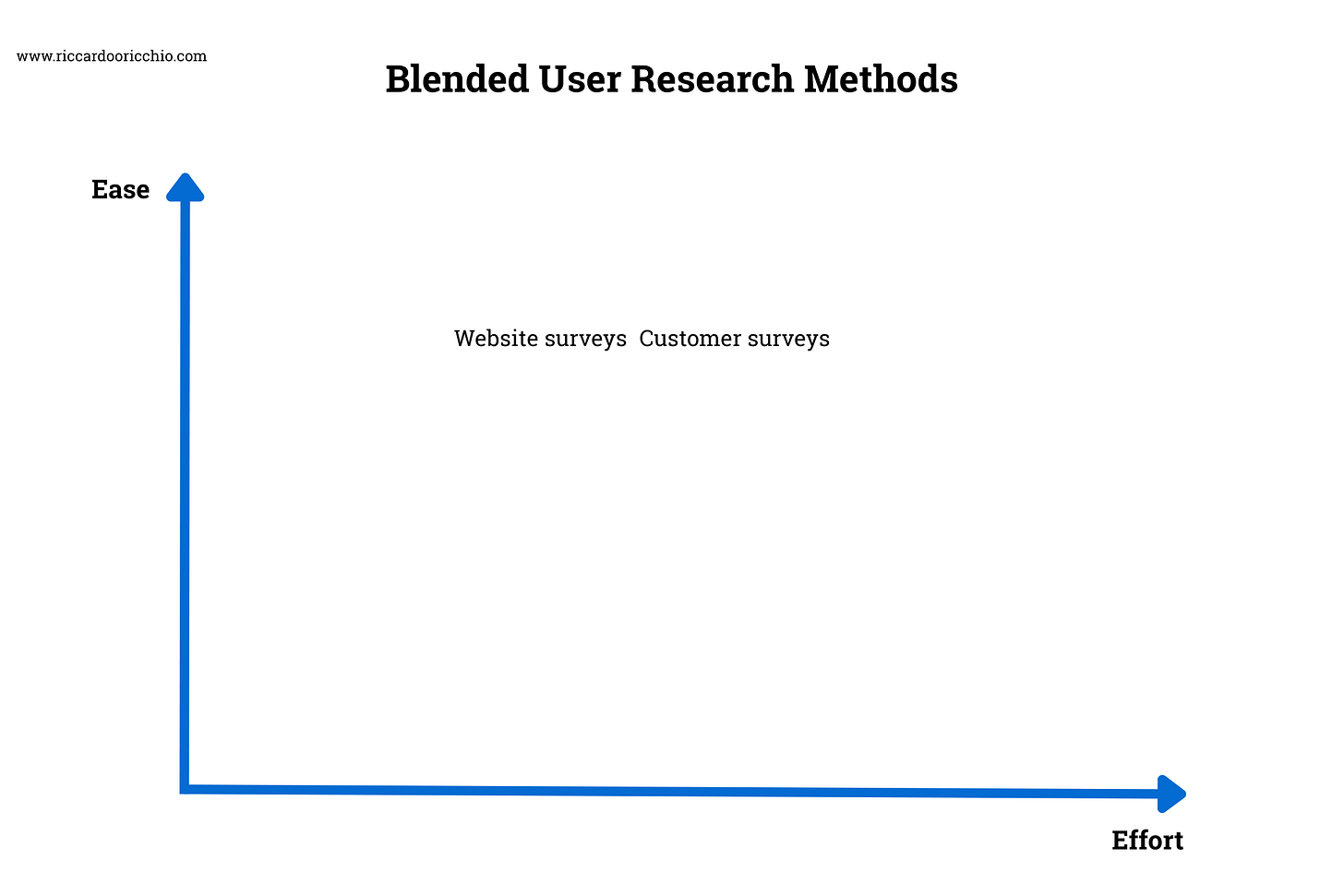User Research Methods Sorted
Overview of the user research methods, what they are, when and how to use them to address your experimentation strategy.
User research is probably the most important phase in the experimentation process.
Why? Because it enables you to uncover data-driven insights to inform your test ideas.
There are various methods that you can leverage in the user research process, each serving a specific purpose.
Let’s start with the basics.
What is User Research and its purpose?
User Research is a fundamental phase of the experimentation process, whose goal is to gather as many insights as possible to define the user persona on the website.
It helps you understand who your visitors are, what they need, and how they interact with your product or website.
Then, the purpose is to get useful information on website users to prepare the ground for the experimentation strategy.
When to do User Research?
This is not a “one-shot” phase. Instead, user research should run as an iterative process.
How to conduct User Research?
As mentioned, there are multiple user research methods that you can leverage.
To understand their own peculiarities, they need to be split into 3 macro categories:
Quantitative methods
Qualitative methods
Blended methods
Quantitative vs Qualitative vs Blended methods
Quantitative user research methods focus on collecting numeric data that can be measured and analyzed statistically. It helps identify patterns, trends, and user behaviors at scale. Quantitative methods are generally easier to scale but may lack depth.
Qualitative user research methods seek to understand the why behind user behaviors through detailed feedback and observations. It provides deep insights but usually requires more effort to collect and analyze.
Blended user research methods can be either quantitative or qualitative, depending on the reason behind it.
Below, I classified the methods by their ease of use and effort required to help you choose the one that fits your resources and goals.
Quantitative User Research Methods
1. Analytics Data
What is: Website traffic data, like most visited landing pages, user paths, bounce rates, and more.
When to use: To detect behavioral patterns and performance bottlenecks.
How to: easily noticeable through analytics platforms like GA4 and Microsoft Clarity.
Ease: 9/10
Effort: 3/10
2. Website heatmaps
What is: Visual representations of where users click, scroll, or move their mouse on a webpage.
When to use: To understand user attention and interaction hotspots.
How to: Implement heatmapping tools like Microsoft Clarity (free) or Hotjar (paid) on the website.
Ease: 8/10
Effort: 4/10
3. Session recordings
What is: Recordings of actual user sessions showing mouse movements, clicks, and scrolling.
When to use: To watch real user behavior for usability issues or frustration signals.
How to: Implement session recording tools like Microsoft Clarity (free) or Hotjar (paid) on the website.
Ease: 6/10
Effort: 7/10
Qualitative User Research Methods
1. User interviews
What is: Direct conversations with real users to explore their needs, motivations, and challenges.
When to use: To deeply understand user expectations and pain points.
How to: Recruit users and conduct in-person or online interviews.
Ease: 3/10
Effort: 9/10
2. Customer Support data
What is: Data collected from customer support interactions, including chat logs, emails, and support tickets.
When to use: To identify recurring user issues, frustrations, or unmet needs that might not surface through other research methods.
How to: Analyze customer support records to find common questions, complaints, or feedback themes.
Ease: 4/10
Effort: 6/10
3. Usability testing
What is: Observation of real users as they complete tasks on your website.
When to use: To identify usability issues on a webpage.
How to: Prepare tasks, recruit participants, and observe or record sessions.
Ease: 5/10
Effort: 7/10
4. Heuristic Analysis
What is: UX evaluation of your website against recognized usability principles.
When to use: To quickly identify obvious usability problems without user involvement.
How to: Have UX experts assess the interface for compliance with heuristics.
Ease: 6/10
Effort: 5/10
5. Eyetracking analysis
What is: Technology that tracks where users look on the screen, revealing attention focus.
When to use: For detailed visual attention analysis on key pages.
How to: Use specialized software.
Ease: 2/10
Effort: 8/10
6. Five-second testing
What is: Testing what information users recall after seeing a page for only five seconds.
When to use: To evaluate clarity and the immediate impact of your design or message.
How to: Show users a page screenshot briefly, then ask what they remember.
Ease: 7/10
Effort: 5/10
Blended User Research Methods
1. Website surveys
What is: Short questions presented on the website to collect user opinions or preferences. They might be either closed-ended questions (quantitative) or open-ended questions (qualitative).
When to use: To gather specific feedback directly from users during their visit.
How to: Deploy tools like Hotjar (paid) and SurveyMonkey (paid).
Ease: 7/10
Effort: 4/10
2. Customer surveys
What is: Broader surveys sent via email or other channels to collect detailed feedback from recent customers. They might be either quantitative or qualitative, depending on the nature and structure of the questions (closed-ended vs open-ended).
When to use: To gather specific feedback directly from users during their visit.
How to: Deploy tools like Hotjar (paid) and SurveyMonkey (paid).
Ease: 7/10
Effort: 5/10
Defining the User Persona
Once you’ve gathered enough data, you should be able to define your user persona.
Next Step: Ideation
The next step is the ideation phase, where you turn your insights into test ideas.
You can even differentiate your ideas based on the personas you’ve identified.
Conclusion
Remember, user research is an ongoing process, not a one-time task.
You must continually gather and analyze data from diverse methods to stay aligned with your users’ needs and expectations.
Subscribe to The Experimentation Mavericks and stay up-to-date on everything about unconventional experimentation.
Thank you and
Happy experimenting!





